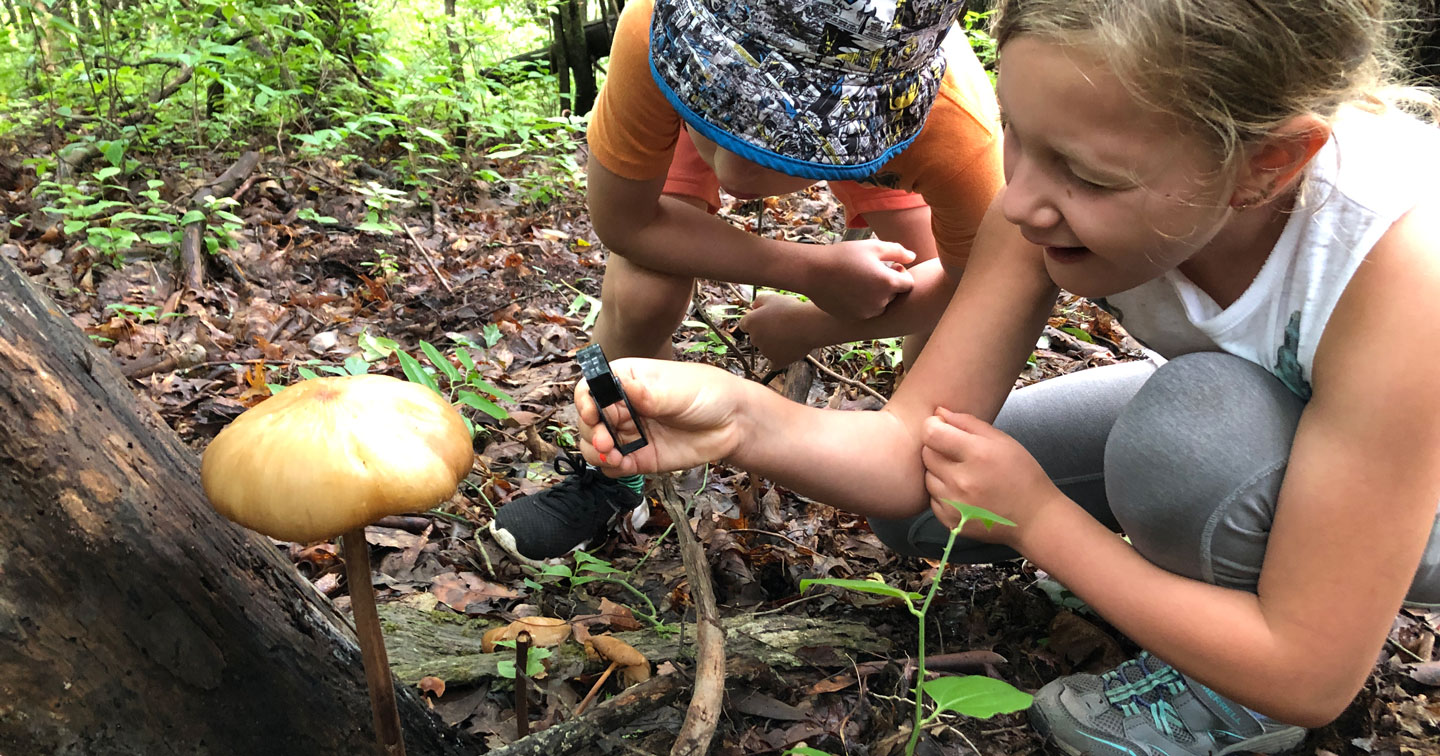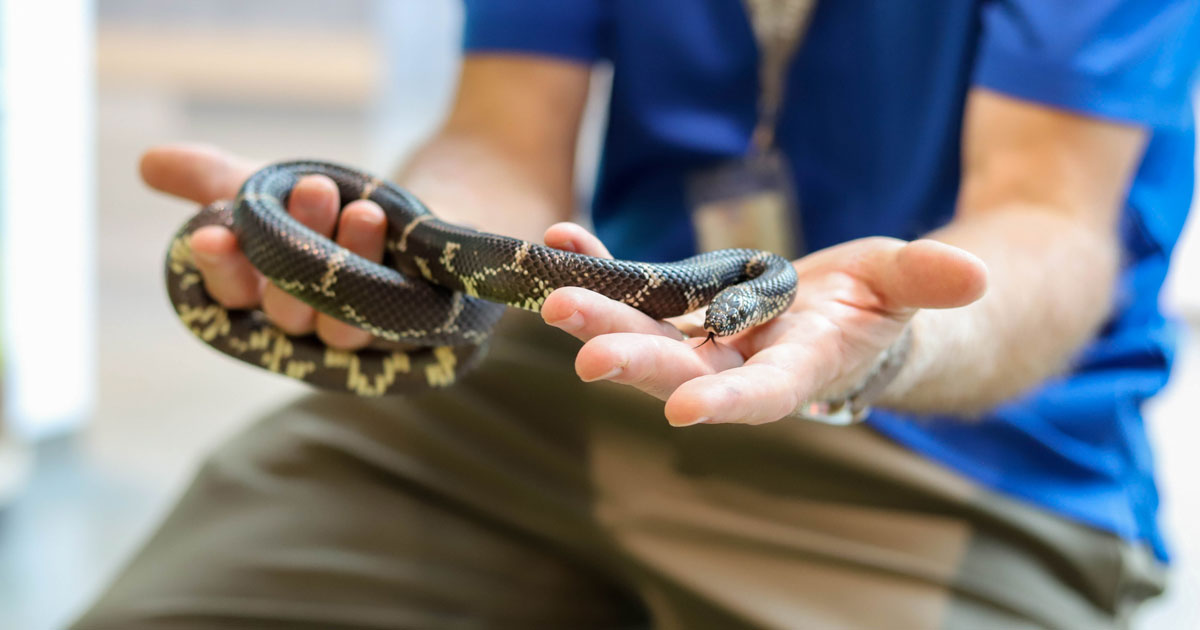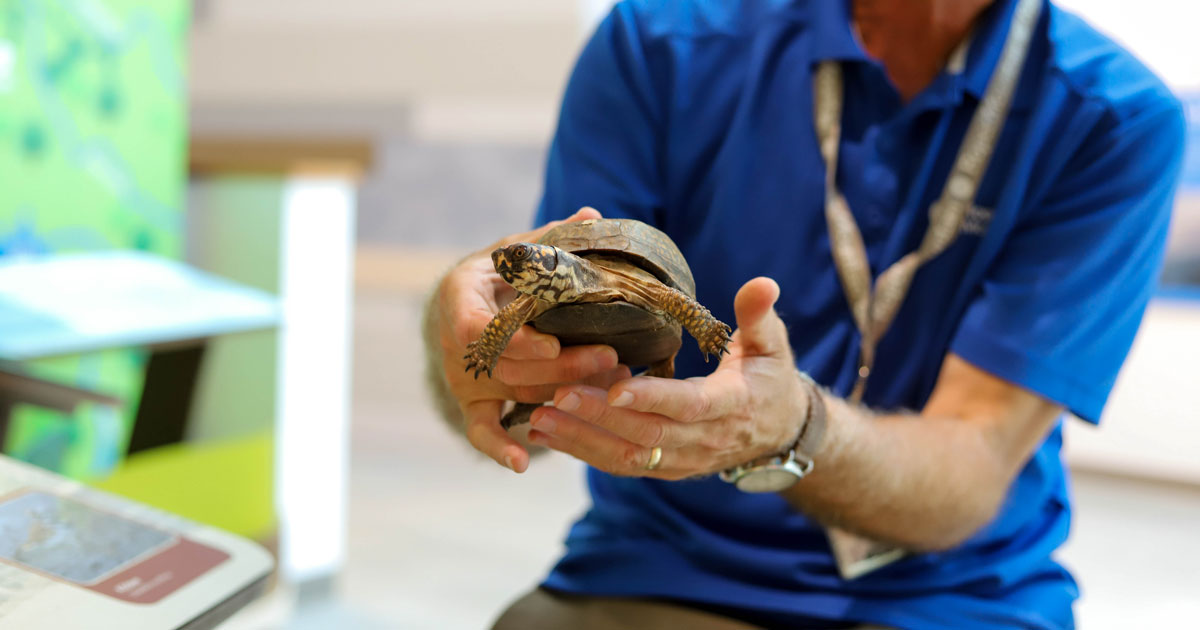Q&A: Tim Taylor of Roper Mountain Science Center
November 24th, 2021
This article was originally published in the Fall/Winter 2021-2022 issue of the Upstate Advocate, Upstate Forever's twice-yearly publication. To read a digital copy of the complete publication, please click here.
 Can you tell us about yourself?
Can you tell us about yourself?
I’ve been working at the Roper Mountain Science Center now for 21 years and I am the Environmental Science Chair and Life Science Specialist. I teach natural science programs, lessons, and field trips.
I grew up out in the country in Indiana and participated in Boy Scouts. I knew early on in high school that I wanted to pursue this field. I started out with an opportunity to work in Indiana State Parks when I was at Purdue University working on a bachelors of science in environmental science and natural resources. Then I came to Clemson University for graduate school, with an emphasis in environmental interpretation. I worked with the South Carolina State Parks, Blue Ridge Parkway, and Boy Scouts for many years, and have been here now for two decades.
What’s your favorite part of teaching children at the Roper Mountain Science Center?
I really enjoy seeing kids’ excitement with nature and the animals. If they learn more, they tend to care more. Usually awareness leads to understanding, which leads to caring for animals and plants and nature.
Why is it important for kids to learn about nature?
Everything depends upon it. We really depend upon nature — we are animals dependent upon plants. If kids can learn to care for plants and animals and become connected in an ecosystem, they’re also going to hopefully become interested in preserving and conserving nature in the future.

What can we do to protect our natural resources?
One thing anyone can do is plant more native plants. We can educate people of all ages about native plants and animals, because the animals depend upon the plants for shelter and especially food. Native wildlife have evolved with native plants and are adapted to them, especially insects that have co-evolved with the plants. So many things depend upon plants and insects in that early part of the food chain and food web.
For instance, a native oak tree can support 500 species of caterpillars! Compare that with a gingko tree, which is non-native, and supports only about five species of caterpillars. Going up the food chain, it takes lots of caterpillars — like 6,000 caterpillars — just to support one family of chickadees.
Since native plants have evolved over such a historic period of time, thousands of years, they’re able to support other species and are better able to adapt to their natural environments so that they can thrive.
What are some of your favorite native species?
We have several native plants that are basically only found in this part of the world, like the mountain sweet pitcher plant, bunched arrowhead, and Oconee bells. It’s pretty interesting that we have some native plants that are only found in this area and nowhere else.

We have really special native animal species, too. The Eastern king snake is a native snake and, like a lot of other animals, its populations have been hurt by habitat destruction. It can feed upon venomous snakes, and that’s pretty neat! We like to teach about snakes because there are so many myths and misconceptions of snakes. The more you know, the less you’re going to be afraid of something.
Another native animal we love teaching kids about is the Eastern box turtle, our only common land turtle. They depend upon native plants and wildlife for food. Again, this is a species that has evolved with and adapted with native species — they’re an omnivore so they’re feeding on insects and fruits from our native plants. A study has shown that they even help distribute seeds of native plants more so than non-native ones, because the native plants are used to surviving through their very slow digestive system. So when they excrete out the seed, they help plant a lot of our native plants. It all comes full circle.


